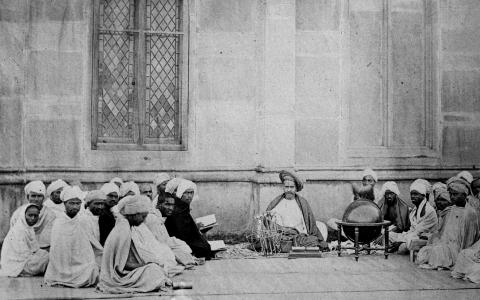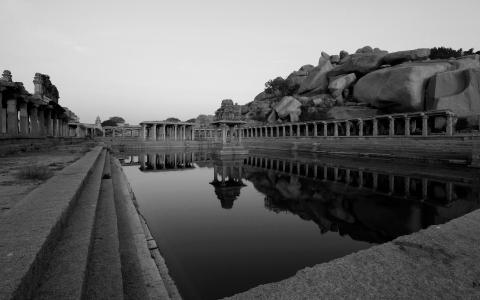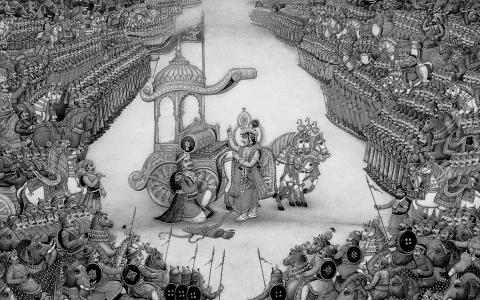July 2016

Abstract
There is much unrest in today’s world and perhaps the wisdom of our ancients will guide us in these times. Not everyone can read Sanskrit so one has to rely on English translations. We have seen many translations of Sanskrit texts and having been familiar with the original, we have found that the translations often lack—to various degrees—accuracy and simplicity. Some translators present literal translations of the original text that...

I have to give vent to what has been bothering my mind for quite sometime now. I hope that the underlying fervor appeals to the like-minded.
With a view to retain and sustain our cultural tradition among the upcoming generations, we induct them into classical music, classical dance, yoga, ethical values that are at the core of our religious practices etc. Of late these practices are gaining acceptance among the middle-class and affluent...

In this instructive video Claude Alvares introduces the crucial work carried out by Dharmpal (1922-2006) in Indian History. Alvares shares his personal story of encountering Dharmpal's work while pursuing his doctoral studies in Netherlands. He explains how this chance encounter turned his view about Indian sciences. Alvares was also fortunate to meet and interact closely with Dharampal for several years.
Alvares speaks eloquently about lone...

For many of us, Krishna is the epitome of sanatana dharma. His every thought, word, and action embodies the spirit of Hinduism. It is no surprise that his wartime counsel to Arjuna is revered as the greatest summary of Hindu thought. We can never be sure if Krishna spoke the exact words of the Bhagavad-Gita as we know it today, but it seems likely that at least the core message of the text was spoken by Krishna. We have all been in situations...

नीलोत्पल-दल-श्यामां विज्जिकां मामजानता ।
वृथैव दण्डिना प्रोक्ता सर्वशुक्ला सरस्वती ॥
nilotpala-dala-shyamam vijjikam mam ajanata |
vrthaiva dandina prokta sarvashukla sarasvati ||
Immadi Pulakeshi, the valiant ruler of the Chalukya dynasty, is the pride of all Kannadigas. Under his regime, the kingdom crossed many frontiers and extended its influence till the banks of Narmada. He was hailed as दक्षिणापथपरमेश्वर – the invincible emperor of the...

Vidyaranya ensured that different religious traditions of the land were given equal respect while not disturbing the peace in the empire. For a great empire to flourish, it needs more than military and political prowess. Only a robust cultural and social foundation can ensure that the people of a country remain united through troubles and turmoil. If a cursory look at today’s world can show us what kind of profound impact religion can have over...

The Age of the Vedas: Indra – a great symbol for kshaatra
In the Vedas, Indra has been called Purandara. It means that he is the Indra who destroyed the puras of asuras. The word ‘pura’ can either mean the ‘forts’ of the enemies or their ‘bodies.’ Purandara is used in the sense of one who is capable of destroying the three kinds of shariras – स्थूल, सूक्ष्म, and कारण.
Calling Shiva as a Tripurari also has a similar connotation. The meaning of...

3
The popular belief held from the period of the Vedas is that in the world of creation, behind the various forms there is a formless principle or law that governs them. Our rishis recognized that in the solar activity (of sunrise and sunset), lunar activity, and the seasonal changes, there are well-defined principles or laws. Similarly, they recognized the governing principles behind living beings. They identified the origin of life and the...

In 1962, the Marxist historian D D Kosambi published a work titled Myth and Reality: Studies in the Formation of Indian Culture (hereafter referred to as 'M&R'). The first part of the book is called ‘Social and Economic Aspects of the Bhagavad-Gita’ and deals with the philosophical, ethical, and historical aspects of the Gita. Not only are most of his arguments baseless, they also reek of a deeper intellectual dishonesty, which possibly...

An exploration into three fundamental but interrelated concepts in Indian philosophy: dharma (principle of sustenance), brahma (or brahman; Supreme spirit that pervades everything) and rasa (the aesthetic experience). While dharma is an efficient tool for managing life, rasa bridges the material and the spiritual, and brahma is the all-encompassing absolute.
V-Raghavan_2.jpg
Prof. V Raghavan
The Sanskrit literary magazine...
